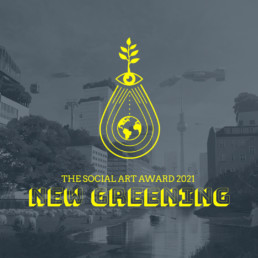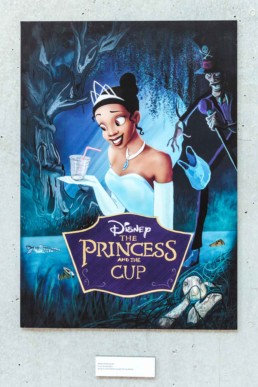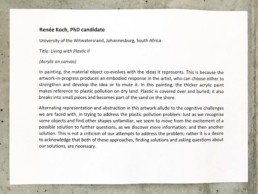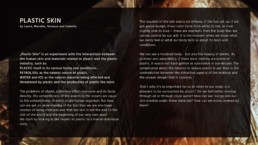Go on the search
Jaron
Aged 81, Jaron is the owner and inventor of the island. A fun-loving, he- adstrong, and crazy guy, he has always remained young at heart and loves riding the octuple-loop rollercoaster to get going in the morning. He hates injustice, violence, and rainy days and loves snow and ice.
When, one day, an iceberg drifted towards the island, Jaron immediately knew that it was going to be his new home. A pendant bridge connects the island to the iceberg, which accommodates bedrooms, living rooms, an inventor‘s workshop, and laboratories on several floors. Instead of an elevator, an octopus-like hovering system provides access to the different rooms. In a way, Jaron has always been on the island, which makes it all the more strange that he is no longer there. One year ago, he disappeared during a dive to the underwater attractions. Since then, fewer and fewer visitors have come to the island, even though Camilla maintains and rein- vents everything exactly the way Jaron did it – but somehow the magic seems to have left Øy with him. People believe that Jaron drowned, but Camilla is firmly convinced that he is still alive.
Listen to the audio book part 4
Concept designs from the scenography course at Filmuniversity Babelsberg
as the basis for "walk-in images" in the form of video clips
Artistic Research: Reflections about Plastic
Results from the International Masterclass Artistic Research:
Transmedia Storytelling – Camilla Plastic Ocean Plan at Filmuniversity Babelsberg 2019
SHOW US YOUR OWN IDEAS ON INSTAGRAM OR VIA EMAIL (max 10mb)
What plastic pollution really means
Once you get involved in the issue of marine debris you begin seeing plastics everywhere. Your perception for this sort of environmental pollution is shaped and you realize that mankind spoiled the world’s most precious environments within a few decades with an extremely conspicuous and persistent heritage. After bemoaning the loss of landscape aesthetics, we return from the wilderness back home to our cosy houses and apartments and seek for divertissement on TV and in social media. But what about those who cannot easily leave the polluted places? What about those who have to cope permanently with the hundreds of millions of tons of plastics in the oceans? What about the countless species that have evolved over millions of years to perfectly survive in an environment without plastics when all of a sudden their habitats are flooded by this unprecedented wave of foreign matter? For a marine biologist, plastics itself is a quite boring and lifeless material.
However, seeing that something as familiar to us as plastic drink bottles becomes deadly traps for tens of thousands of hermit crabs on remote Pacific islands immediately captures my scientific curiosity for the numerous interactions of the marine biota with plastic debris, which are as diverse as the species themselves. Their instincts, that make animals so successful in their natural environments, become shifty traitors in a rapidly changing world. How could an Albatros know that it is doing harm to its chicken when feeding it on plastics? The Albatros took the plastics out of an ocean, which he instinctively knows to be an inexhaustible source of high quality food.
How can fishes and sea turtles know that a lost fishing net floating at the sea surface is not a shelter but a deadly trap that does exactly what it was built for: fishing?
Exploring all these diverse and way too often fatal interactions and spreading word about it is essential for making people understand what plastic pollution really means. For a great number of organisms it is not a matter of aesthetics – it is a matter of survival. So far, we have no indication that plastic pollution has led to the irreversible loss of species. So, one might say: “It’s not that big an issue.” However, countless scientific reports and images in the public media are bearing testimony for countless creatures suffering from ingestion, entanglement, smothering and injury resulting from interactions with marine debris. We are just beginning to understand how plastic pollution is interacting in its effects with other major environmental hazards, like global climate change and over-exploitation of living resources. It is, however, easy to imagine that an undernourished seabird with a plastic-filled stomach has only limited capacities to cope with the physiological challenges of rising temperatures. It is obvious that in the long run these developments will have negative implications also for us humans as we are so inseparably dependent on the resources provided by nature. We have the knowledge and we have the tools to maintain the oceans and all other ecosystems in a state that allows for sustainable coexistence of humans and other creatures. However, it’s high time to use these tools to create the fundament for a healthy future.
Dr. Lars Gutow, Alfred Wegener Institute
Helmholtz Centre for Polar and Marine Research
Illustration by Charlotte Hintzmann

THE SOCIAL ART AWARD 2021NEW GREENING DAY30 April 2021, 14:00-19:00 CET
Strongly orientated towards the topic of "New Greening", the Berlin-based Institute for Art and Innovation aims to be an inspiring anchor for interdisciplinary future conversations, envisioning an open-minded, regenerative world and sculpting a truthful commitment to it. At the "New Greening Day" sessions we will welcome specialists from different fields to come together and bridge the gaps between their expertise to push forward with cultivating urgent and meaningful change towards a greener world.






















